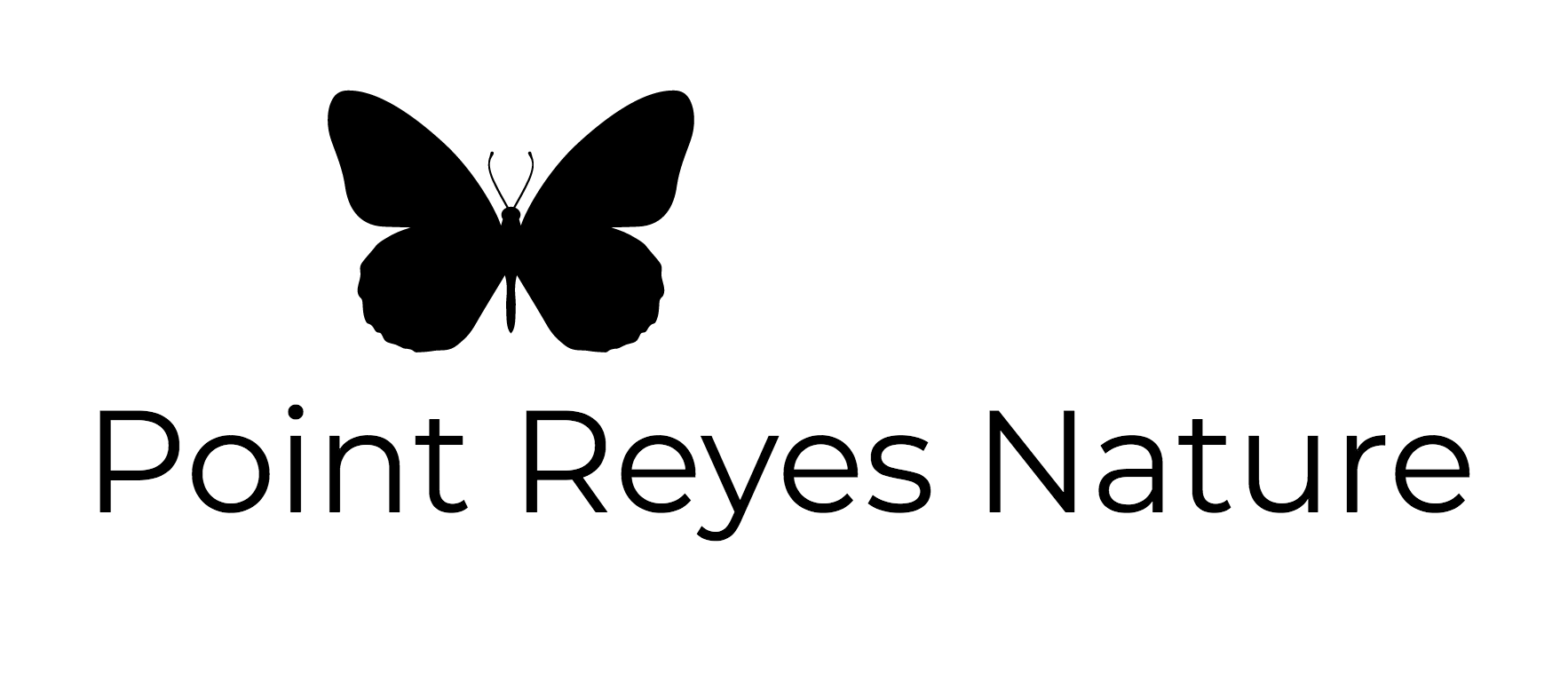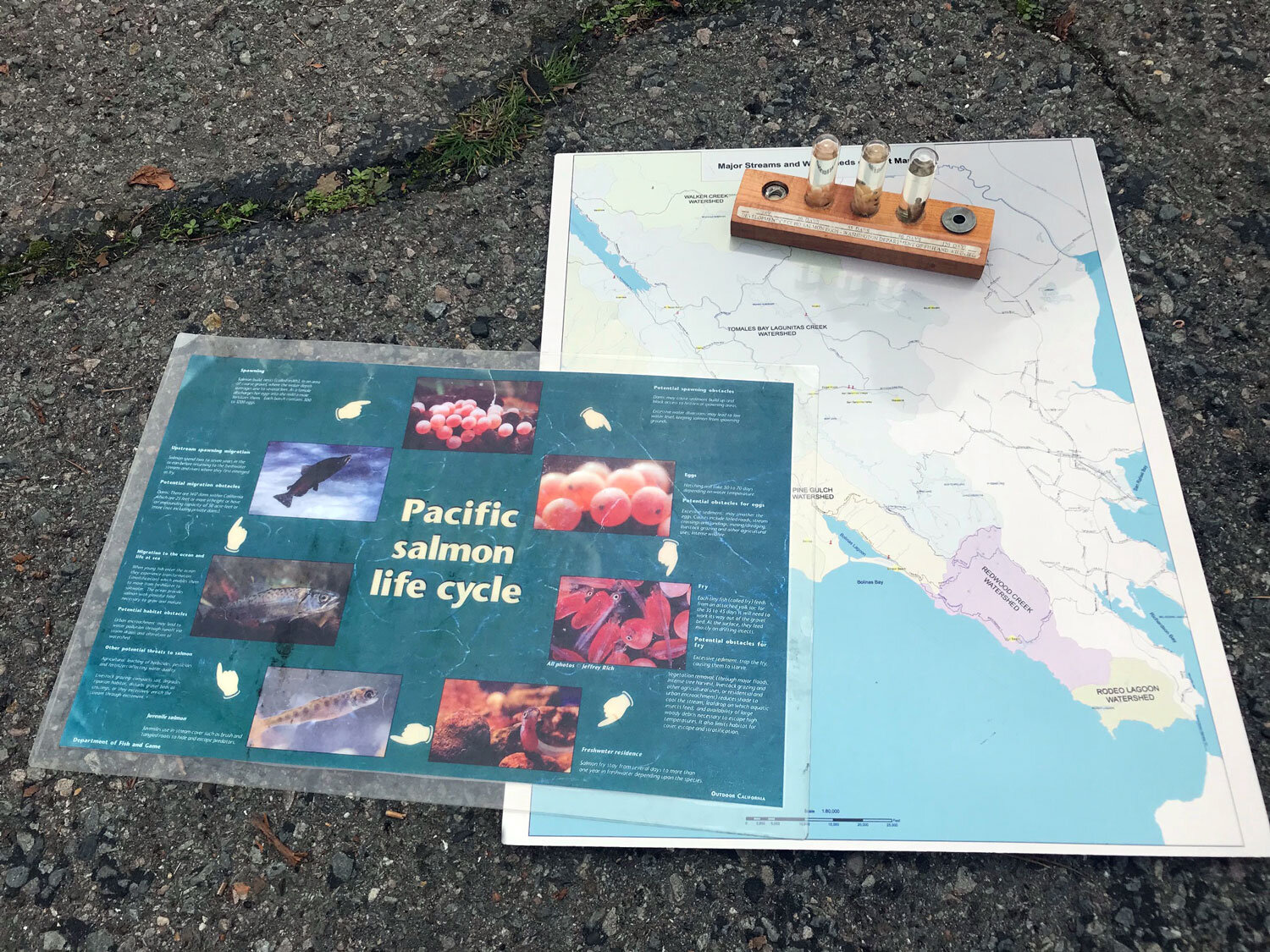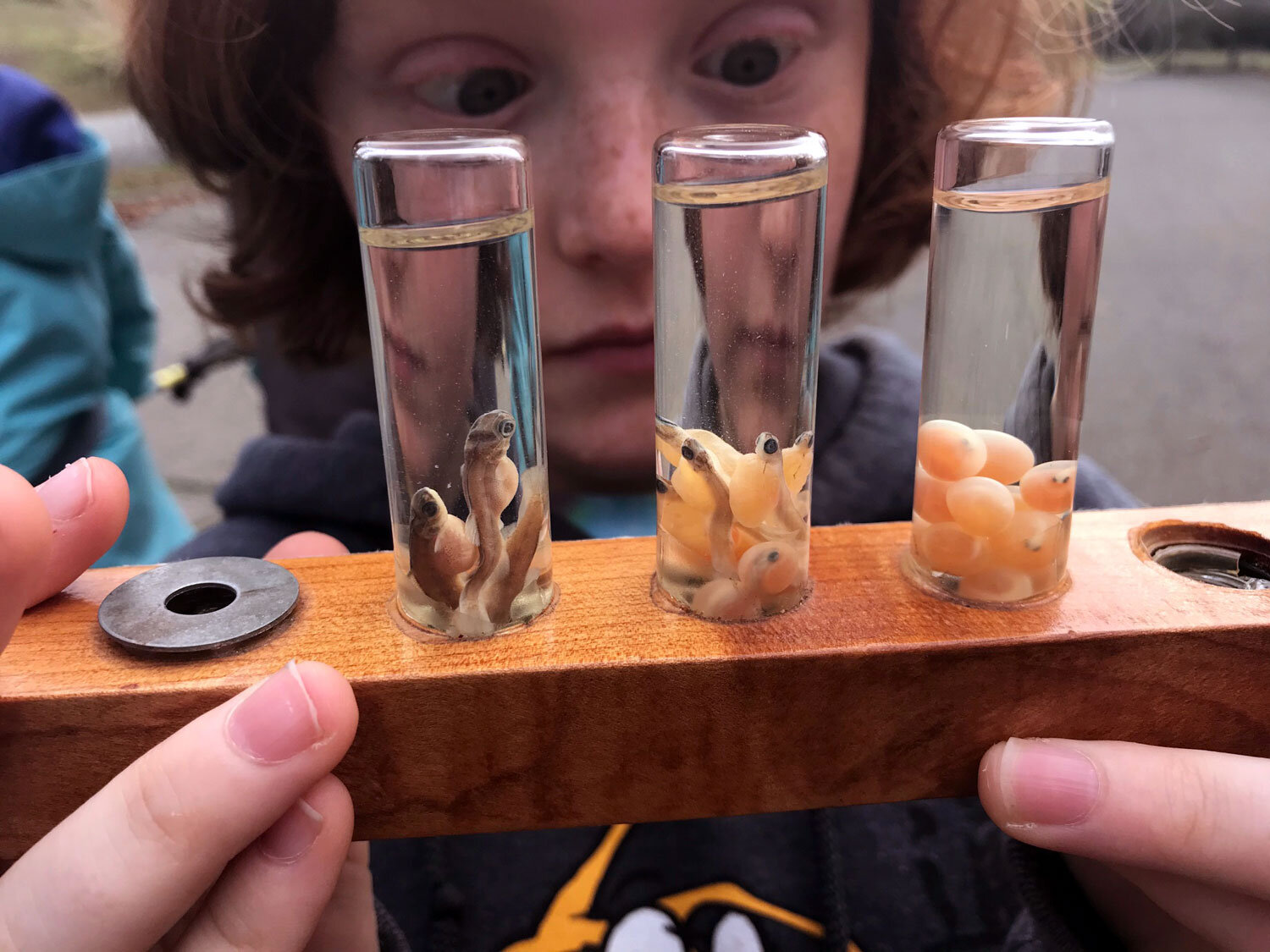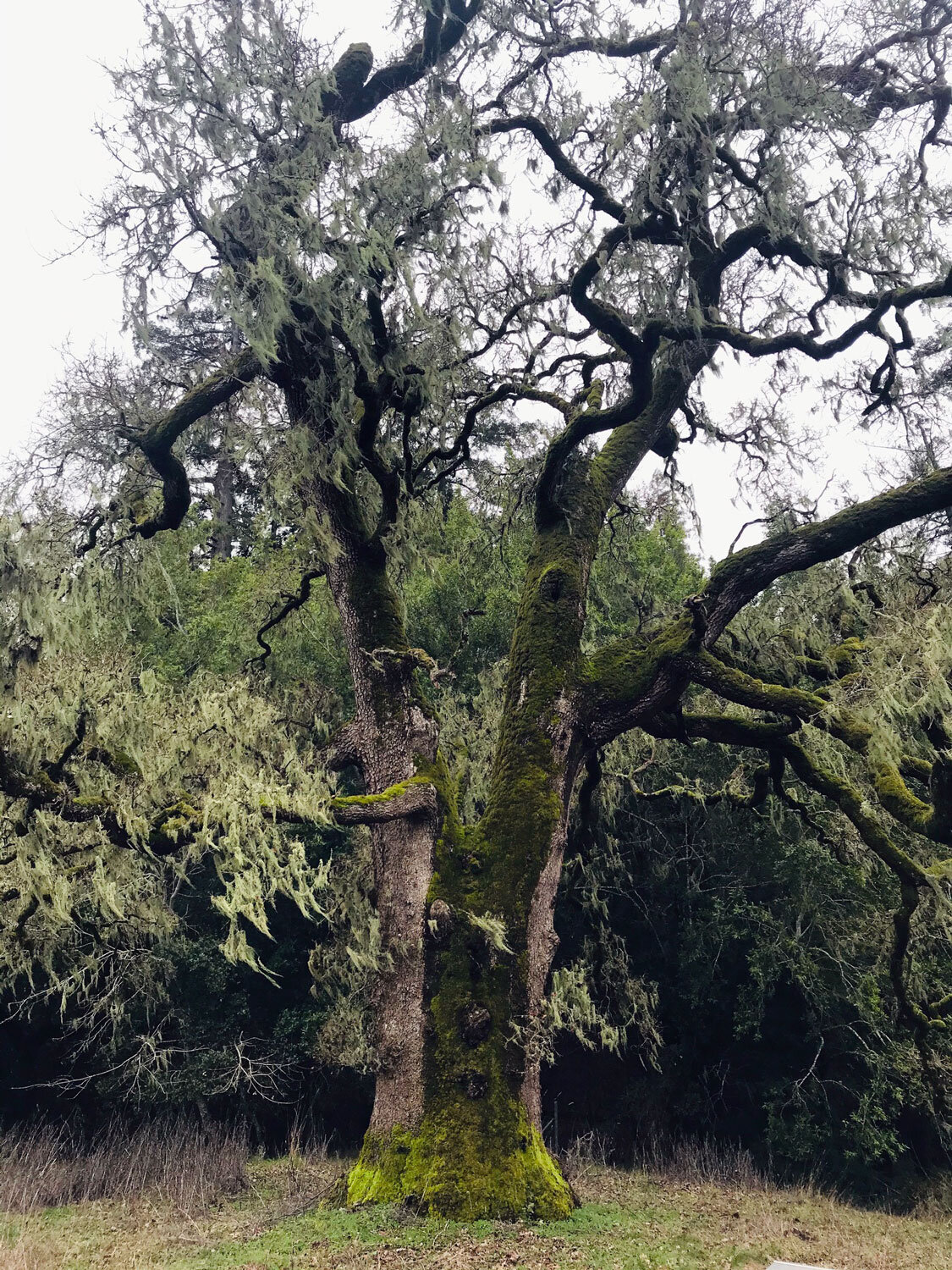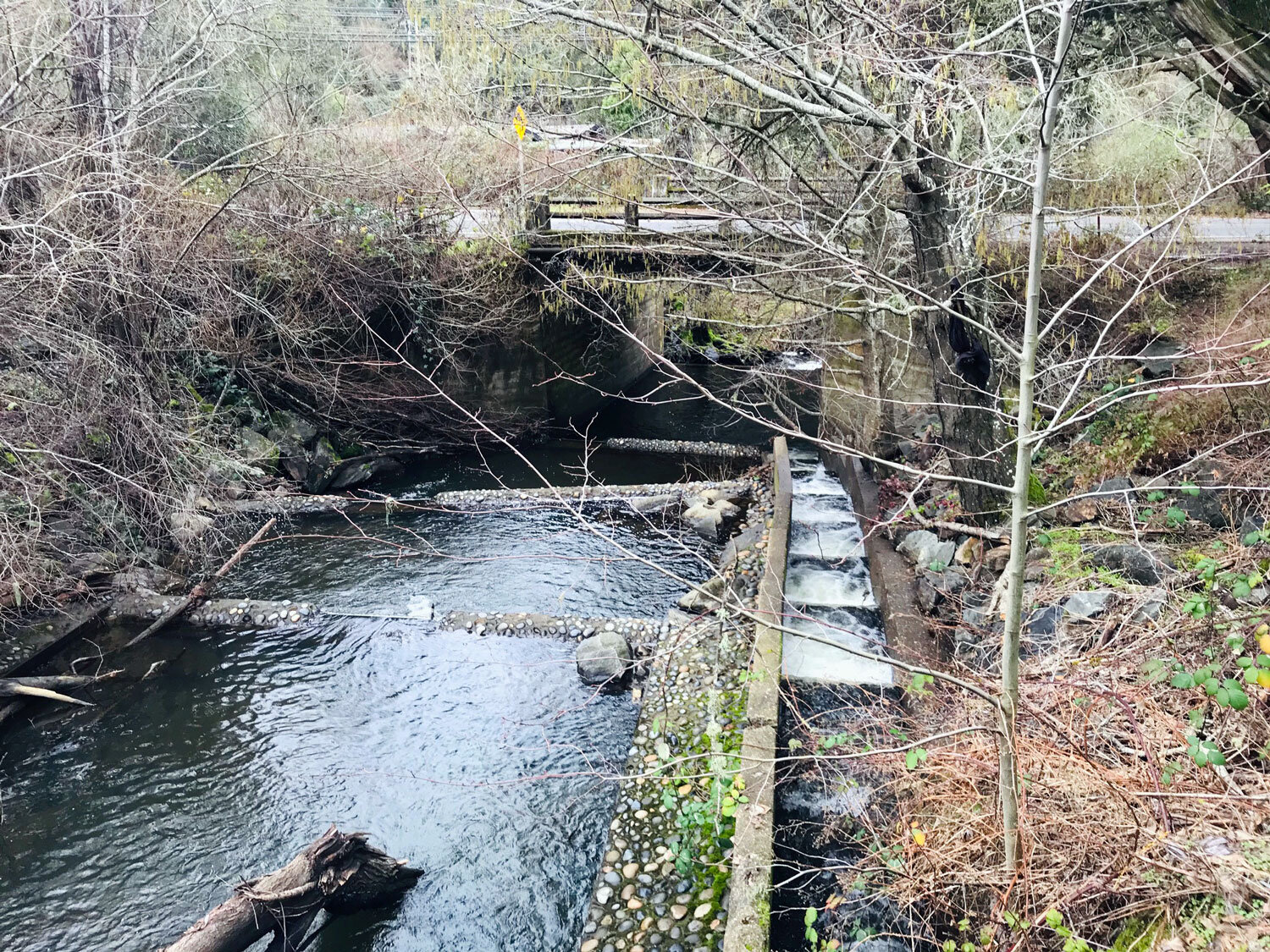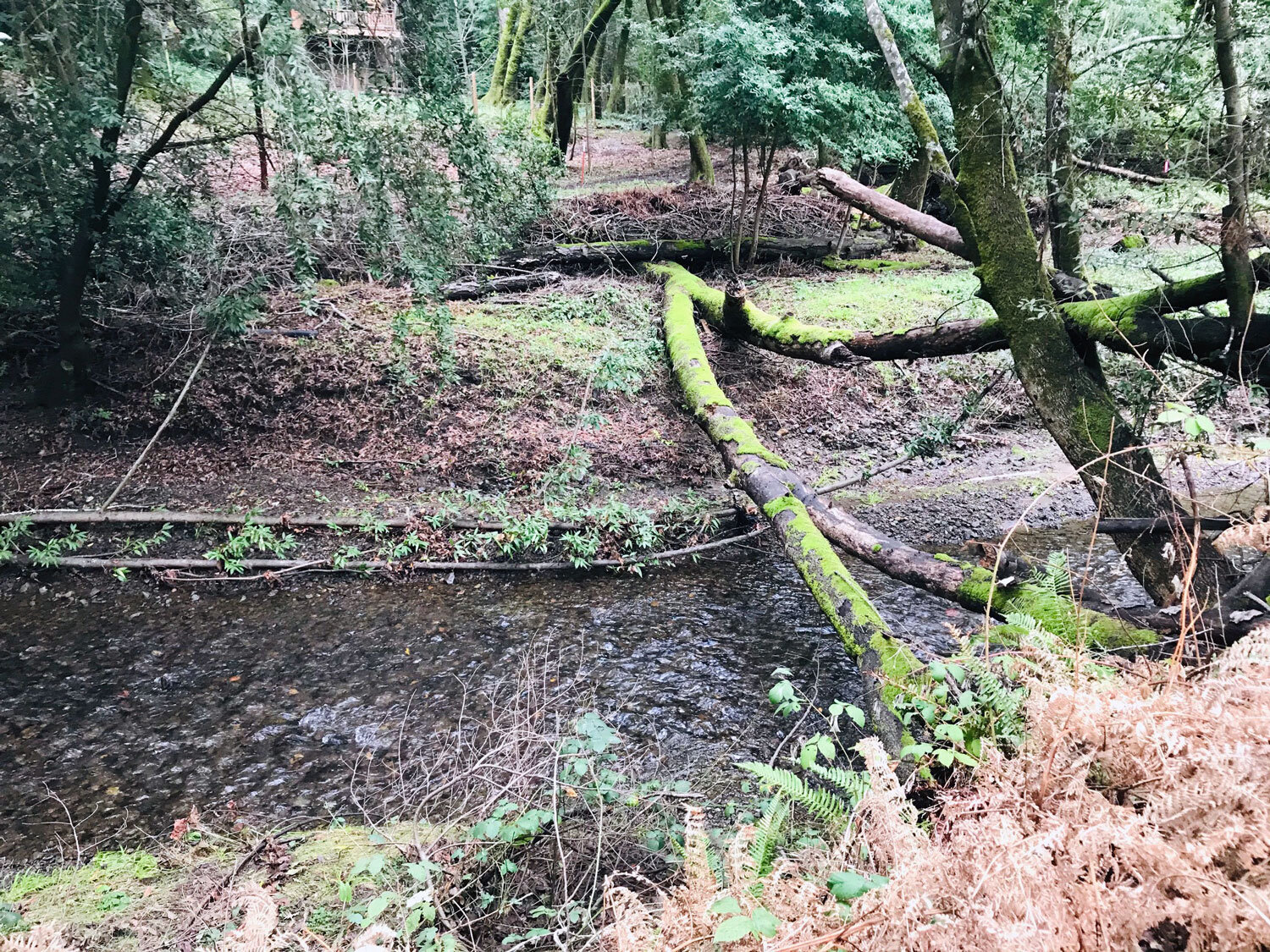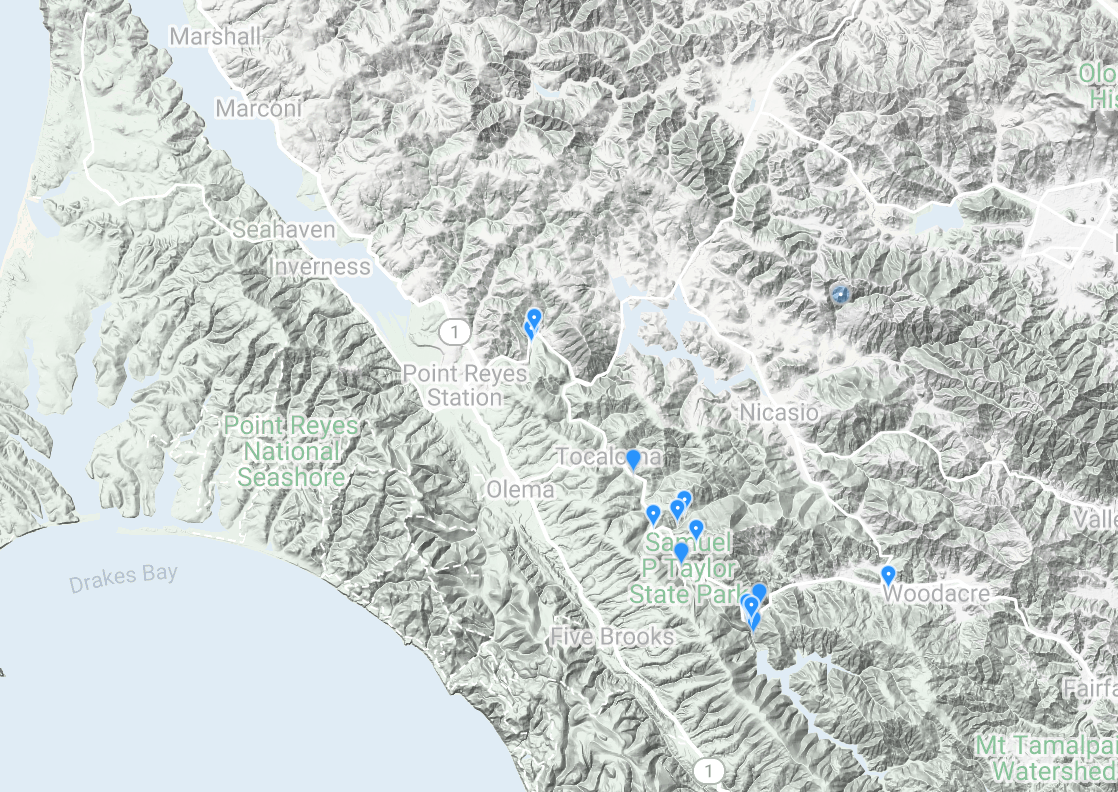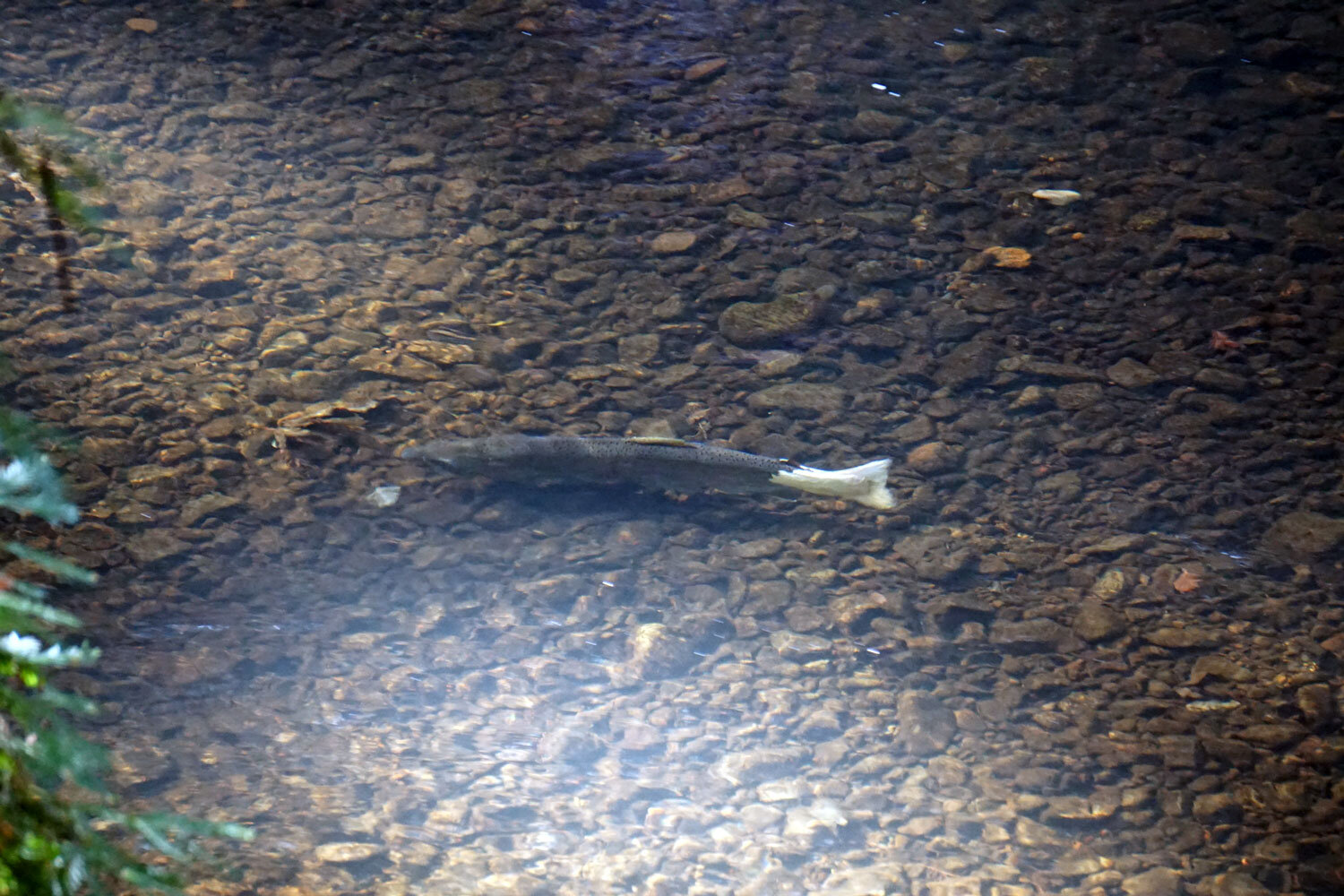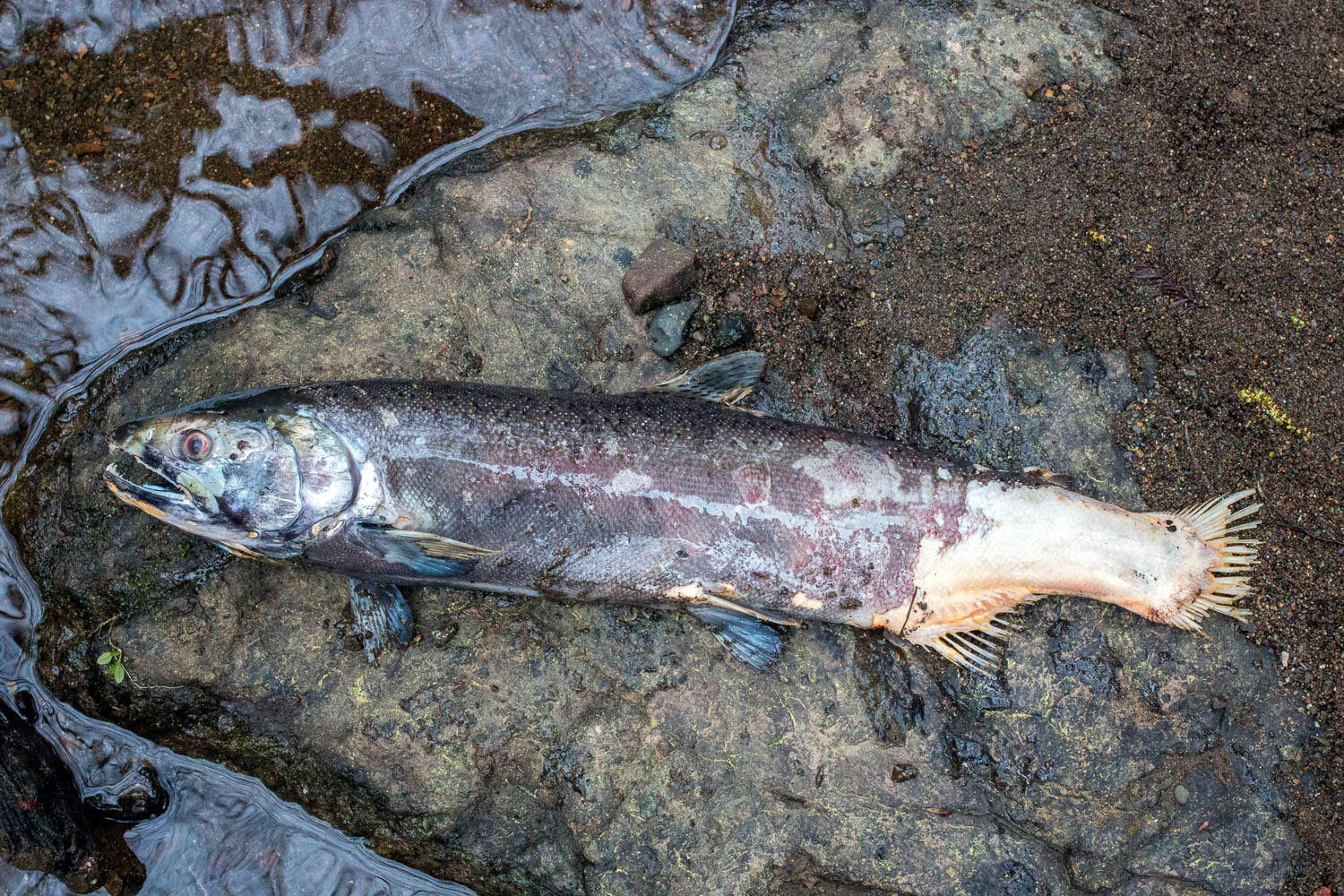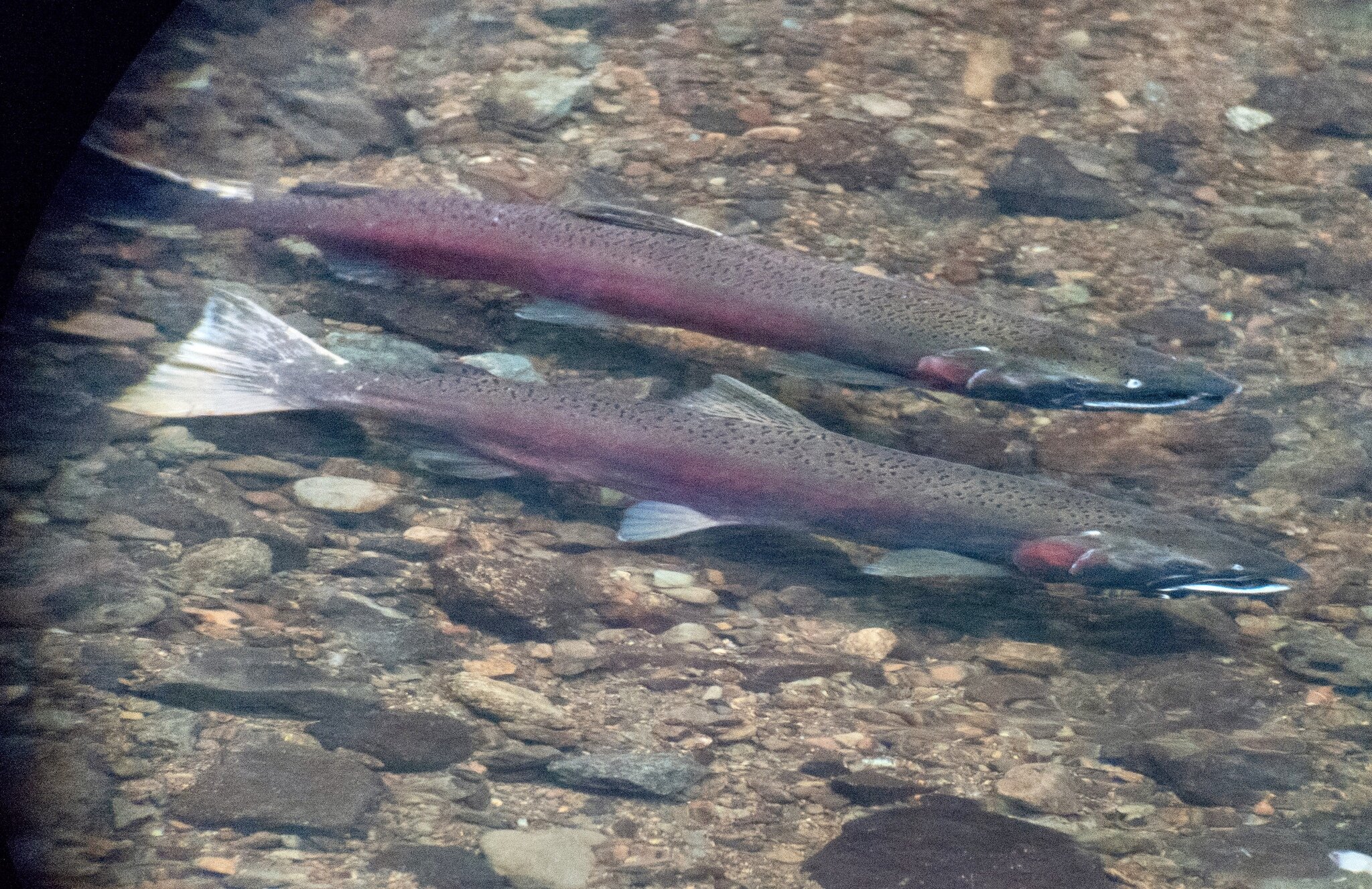A Coho Salmon creek walk
Harry McGrath of the Salmon Protection and Watershed Network (SPAWN) led a two-hour walk along San Geronimo Creek for a group of salmon enthusiasts today. He introduced us to the life of the Coho Salmon (Oncorhynchus kisutch) of the Tomales Bay-Lagunitas Creek watershed.
Coho Salmon spend their first year in freshwater creeks and their second year in the ocean near the coastal shelf where they may feed on plankton that rise from the depths during upwellings. In their third and final year of life, the salmon make the arduous journey from the ocean back upstream to their birthplace to spawn the next generation.
How do salmon find their way home?
Like birds, they use magnetic fields to navigate from the ocean to the freshwater. They use scent to recognize the stream and exact place in which they were born.
What’s the best time of year to see salmon spawning here?
Chinook (October to December, peaking in November)
Coho (November to January, peaking in December)
Steelhead (January to March, peaking in February)
The morning after a big storm is the best time to see salmon.
Where are good spots to see salmon in the Lagunitas watershed?
At the fish viewing area, of course! The Leo T Cronin fish viewing area in Lagunitas has a small parking lot and a bridge over the stream. You may not spot fish right at the bridge, so walk along the creek. The Inkwells, on the other side of Sir Francis Drake Blvd, is an active area.
Check out iNaturalist to discover where people have observed Coho Salmon in this area in the past decade.
Where do they lay their eggs?
Coho Salmon females look for the intersection of where the water is moving slowly (called a “glide”) and where it moves faster making white caps (called a “riffle”). She is looking for an area with small gravel, not mud. The faster moving water brings oxygen to the eggs. You may see colored tags tied to tree branches near the creek. These are nest markers. The color indicates the year and place. This year’s colors are blue and red. If you get close enough to a tag, you’ll see a date on it indicating when the nest was spotted. The tags are placed by the Marin Municipal Water District and the California Department of Fish and Wildlife.
The female salmon sweeps her tail on the bottom of the creek to dig a nest, called a “redd”, possibly from the Scottish term to sweep or tidy. She makes several small pits in the nest where she’ll deposit her eggs. The sweeping action is a signal that the female is ready to spawn and it attracts males.
What happens during spawning?
The female and male both flatten themselves to the bottom of the nest pit area, facing upstream. The female lays her eggs (about 2000 in the various pits) and the male must release his “milk” within 30 seconds to fertilize the eggs. The female covers the eggs for protection and stays on the nest for two weeks until they hatch. Female salmon
Female salmons pay a high price for the sweeping action of making nests. It scrapes off their skin and leaves their tails bare and white. Their white tails make females easy to spot. Photos by Catie Clune, iNaturalist.
What’s special about the Coho Salmon of this area?
The central California species of Coho range from Mendocino to Marin. The Coho of the Lagunitas Creek watershed represent 20% of the entire remaining population. This watershed is the southernmost edge of the population which means it contains the salmon most well-adapted to warmer waters. With the climate warming, it’s critical to keep this warmer-water-adapted population alive. In addition, the salmon here are a completely wild-bred population, meaning fish reproduce in this environment without hatcheries or bringing in fish from other areas.
Why are they endangered?
Salmon prefer to build nests in higher elevations of the upper watershed where their nests are less prone to being washed out by large winter storms. Much of this habitat has been cut off by the four dams of the watershed — Alpine, Bon Tempe, Kent Lake and Lagunitas. The salmon are limited to a smaller geographic area at a lower elevation where many of the creeks have been impaired by residents and businesses. From pollutants to people changing the landscape of the creek by building retaining walls or removing plants and trees that hold the soil in place, salmon’s habitat has been degraded or destroyed. Fastmoving channelized water erodes banks and deepens creek beds over time. Winter storms bring torrents of fast-moving water and debris that can sweep away nests and young fish.
The population has declined more than 95% from historic levels. This year’s count was a mere 130 fish, a very bad year for Salmon. Harry expressed optimism that next year may be a better one for salmon thanks to the work of SPAWN and volunteers improving the salmon’s habitat. And, if the weather is favorable — more rains at the right time for the salmon.
What is being done to help salmon in this watershed?
The Marin Watershed Program published the San Geronimo Valley Salmon Enhancement Plan in 2010. “The Salmon Enhancement Plan presents science-based recommendations to improve and maintain habitat conditions that will support viable populations of salmon and steelhead trout in San Geronimo Valley. The Lagunitas Watershed, which includes San Geronimo Valley, is the largest and most stable population of the endangered coho salmon south of Fort Bragg and presents one of the best opportunities to preserve and restore coho in central California. In addition to coho salmon, San Geronimo also supports threatened steelhead trout and a fall run of Chinook salmon.”
What is SPAWN doing to help restore habitat for the endangered Coho?
SPAWN is doing restoration projects to stabilize creek banks and return logs to the water. Fallen trees slow down the water, offer shelter, provide nutrients as they decompose, and provide a breeding ground for insect food for salmon. Why do you need to slow down the water? When the water doesn’t have any resistance it speeds down the creek like a luge, dragging mud and debris and making the water murky. Salmon need clear oxygenated water with gravel creek beds for their nests.
Christmas Day is a great time to see salmon!
Mark December 25th in your calendar to get outside and take a creek walk along Lagunitas Creek or San Geronimo Creek to see Coho Salmon. December is the peak of their spawning season.
